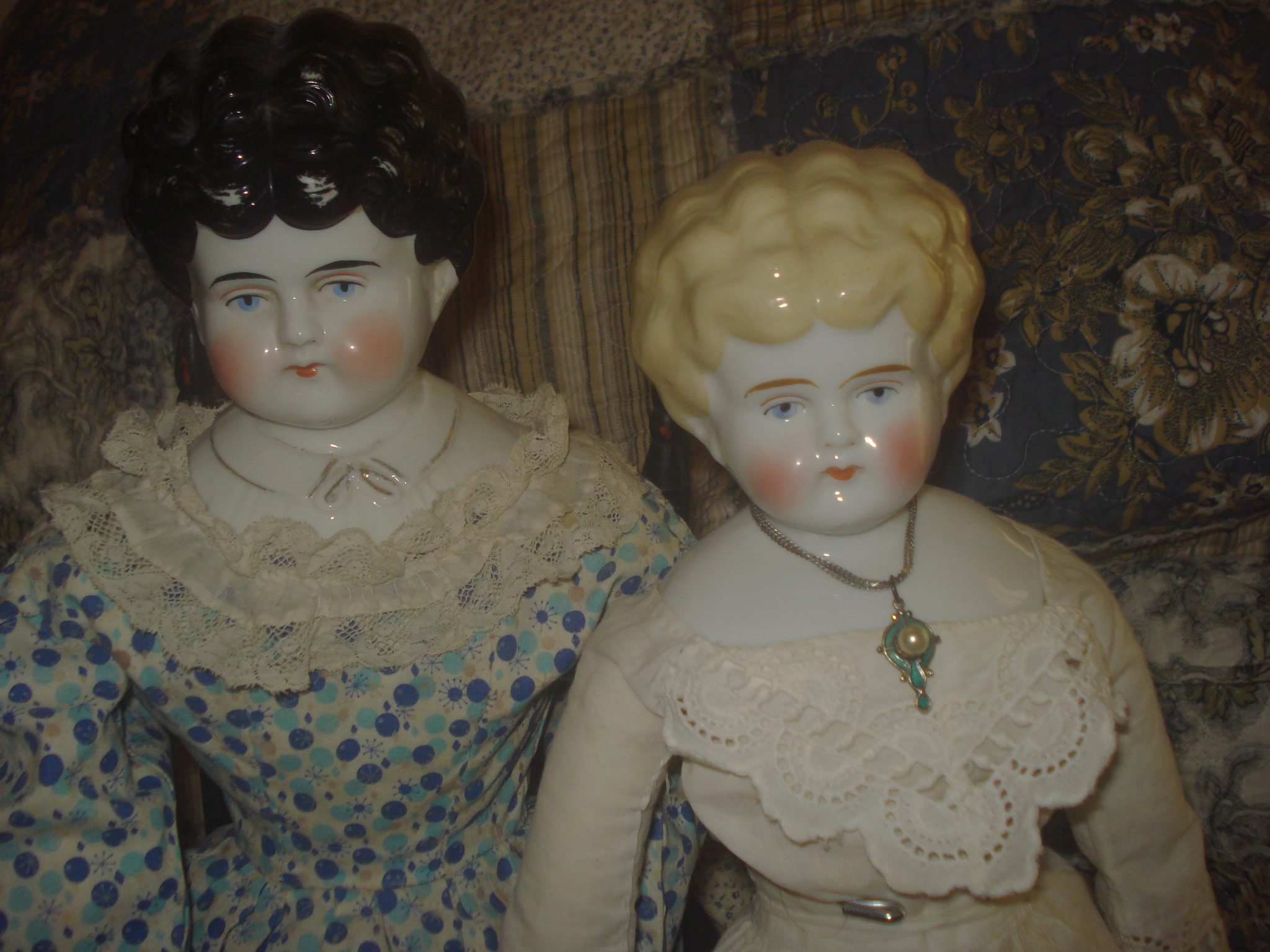
China (glazed)head dolls of the mid 1800's.
Porcelain became popular at the beginning of the 19th century. Its a name used generically to refer to both china and bisque dolls. China is glazed, whereas bisque is unglazed. Dolls are named after the variety of hairstyles they wore--be it a "Covered Wagon" style (hair flat on top with sausage curls around the head, 1840s).

"Alice in Wonderland" (molded head band, 1850s)

or the "Dolly Madison" (curls all over)
--whatever was fashionable at a certain time.China heads were replaced by heads made of bisque in the 1860s.
Germany, France and Denmark started creating china heads dolls in the 1840's they are often identified by their hairstyles.
The most beautiful china head dolls unquestionable belong to those with molded hair,
historically produced during the late period of 1830’s until the early part of the 20th century. Among these, the lady- like china stand out as art objects rather than toy dolls.
The highest number of production made in Germany from 1850’s through 1890’s, centered around the cities of Sonnenberg and Nuremberg.
The Hair Dress is a good indication of the period the dolls were manufactured, as they imitated the styles that were fashionable at the time they were made…For example a doll with a chignon, or waterfall hair dress, could be dated as 1860-1870. Bangs would indicate a much later period, early 1890, when this style was worn.
Many china heads, especially those with unusual hair styles, are called "portrait dolls" and are named for those they are supposed to resemble-Queen Victoria, Mary Todd Lincoln, Dolly Madison, Countess Dagmar, Jenny Lind, Adelina Patti, and Alice in Wonderland. It is unlikely that these ever were actual portraits. Doubtless some fancied resemblance has caused collectors to so name them….Unfortunately, most china dolls are unmarked that makes it difficult to distinguish which company designed which doll. Sporadically, dolls are marked within its shoulder plates, putting the company name that manufactured the item. Some companies also put a number on the reverse part of the shoulder plate of the china doll.China heads made after 1898, will of, course be marked GERMANY, Occasionally they will be marked with letters or numbers, but there seems to be no way of finding out what these markings mean.Harper's Bazaar referred to china dolls as "old fashioned" in 1873, though they continued being made well into the early 20th century. China doll heads were produced in large quantities, in different parts of Europe, counting in the millions.sitting or standing alone in antique shops and even in flea markets, waiting to be loved and valued again. We need to appreciate these old dolls with particular affection, even if for the thought alone that they have survived well over a hundred years.

No comments:
Post a Comment